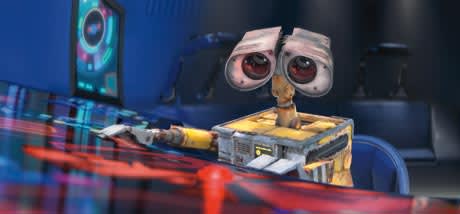The success of computer animation studio Pixar is so unprecedented that its beyond comprehension at this point, so lets move on. Wall-E which uses minimal dialogue to tell a love story between a Buster Keaton-like trash compactor and a sleek, modern, beautiful robot is Pixar at its best, full stop. From sound design to animation to storytelling to DVDs, its pretty much perfect. And a single-disc DVD, which features a couple of deleted scenes and a look at sound design with modern godfather Ben Burtt (who created the sound of R2-D2), as well as a new animated short called Burn-E, which concerns a maintenance robot peripherally affected by the films main action, is great. But when you look at a three-disc version, the world of Pixar opens up immeasurably more extensive featurettes outline the extent to which major changes were made throughout the process, and details on robot design, cinematography and storytelling are great. Add in the 2007 feature-length documentary The Pixar Story and suddenly Wall-E is more than a nights entertainment: its a landmark achievement in animation nay, in film history, part of a golden age being led by a company that George Lucas let go when it was just a division of his empire, because he didnt want to be making "cartoons. Hows Clone Wars doing? Plus: digital copy, deleted scenes, storybooks, audio commentary, BNL corporate messages, more.
(Pixar/Buena Vista)Wall-E
Andrew Stanton

BY James KeastPublished Nov 21, 2008